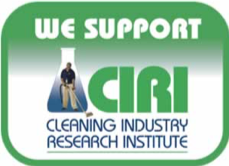What is the Omicron variant?

At the end of November 2021, scientists identified a new variant of the COVID-19 virus: the Omicron variant. Nearly two months later, it has seemingly outpaced the Delta variant and is the prevailing source of new infections.
We’ve discussed virus mutations in a previous blog, “What are virus mutations?” Like Delta before it, Omicron contains many mutations compared to the original virus. However, Omicron’s numerous mutations (said to number somewhere between 30 and over 50) have changed the virus in several key ways.
Omicron’s Differences
Please note that these findings and preliminary studies may not remain accurate over time; it has been a relatively short amount of time since Omicron has appeared, and it will take more time and data to make definitive statements.
At the time of this writing (January 2022), there are three notable characteristics that make Omicron a very distinct variant.
First, Omicron is much more contagious than previous variants. With transmissible illnesses like COVID-19, scientists use a term called the “reproduction number” to indicate how many people a virus would likely infect if it’s already infected one person. (For example, a reproduction number of 1 means that if one person is infected with a virus, then they are statistically likely to infect one other person with it in normal settings.) Omicron’s reproduction number is somewhere between 2 and 4, which is a very high number for a virus. (Read Scientific American’s article about it here.) More infections mean more people will get sick, and consequently lead to the virus spreading to even more people.
Second, Omicron is statistically creating less severe illness in populations. Currently, a prevailing hypothesis is that Omicron replicates in the throat more than in the lungs. An early study from animal research shows that Omicron mostly infects the nose, throat, and windpipe. (Read more about this study here.) Some doctors say that this would make the variant more like bronchitis than pneumonia. (Read more about this comparison here.) Overall, this would mean that there would be less severe illness across the population (although it would still be possible for Omicron to cause severe illness).
It should be noted that most of the data supporting this hypothesis involves populations with some degree of previous immunity, either through previous infections or vaccines. Currently there is not enough data collected to show to what degree this applies to populations without previous immunity.
The third notable change is that current medication and vaccines are not as effective on Omicron as they were on previous variants. This is due to the number of mutations Omicron has compared to the original virus, which we based most of our current treatment and prevention on.
In regards to vaccines, the immune system takes a little more time identifying and combating the Omicron variant once a person is infected. This leads to more breakthrough cases, although early reports indicate these cases often result in a mild illness.
The medication effectiveness has proven more worrisome; some treatments that helped prevent long term hospitalization, disability, and even death are having little to no effect against Omicron. Not only does this give doctors less treatment options to use, but it also puts a strain on the supply of treatments that still work effectively.
What should we do?
The combination of these three factors is important. While there is less severe illness on a whole, the sheer number of infections can easily put a large strain on the medical system. For these reasons and more, it is ideal to continue precautions to help prevent the spread.
Luckily, most prevention measures still hold up. A combination of vaccinations, personal protection equipment, and rigorous cleaning can lower your chances of catching it. Even if you do catch it, reducing the amount of virus particles that do infect you can make quite the difference.
Janitronics remains as committed as ever to cleaning for health, including against Omicron. With efficient and effective cleaning, we aim to eliminate virus particles before they can infect someone. Reach out to us through our contact form, and get the experts of cleaning on your side.



